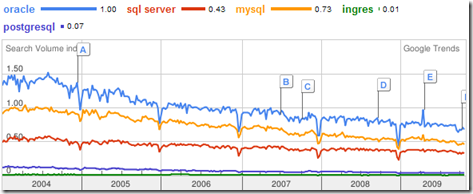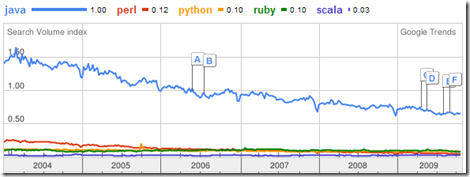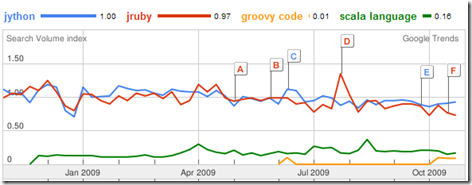Google Trends is a great tool for graphing search term popularity over time. Here is a comparison of searches for several makes of database.
Perhaps it’s a quirk of the phrases I used, but I was surprised to see Oracle so dominant, and even MySQL more popular than SQL Server. PostgreSQL languishes in obscurity compared to MySQL, and Ingres barely registers at all.
Here’s some languages that I’m interested in. Java is hugely dominant.
Let’s take out Java and zoom in. I was surprised to see Ruby’s recent decline relative to Python. Books on Scala have come out only recently.
Looking more specifically at JVM language dialects I’m surprised to see Jython competing so strongly with JRuby. I’m not sure if I picked the right phrase for Groovy.
Choosing tools solely on the basis of popularity is obviously not a great idea, but I do feel better now about continuing to use Oracle, Java and Python.
P.S. See also the TIOBE Programming Community Index



